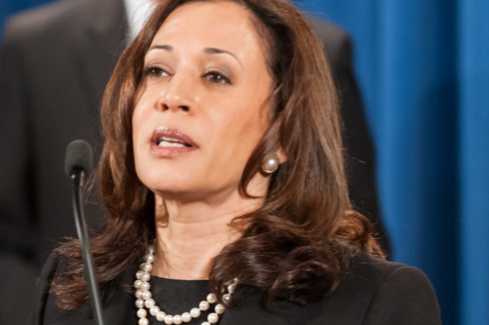Executive
Untapped Relief: FEMA Is Sitting on Billions of Unused Disaster Funds
FEMA (Federal Emergency Management Agency) in fact is sitting on billions of money budgeted for, but never spent on, prior disasters.

Although the Federal Emergency Management Agency told Congress last month that it had $4 billion in its Disaster Relief Fund, officials also warned that the Fund could have a shortfall of $6 billion by year’s end, a situation FEMA says could deteriorate in the aftermath of Hurricane Helene.
FEMA still has untapped reserves
While FEMA is expected to ask Congress for new money, budget experts note a surprising fact: FEMA is currently sitting on untapped reserves appropriated for past disasters stretching back decades.
An August report from the Department of Homeland Security’s Office of Inspector General noted that in 2022, FEMA “estimated that 847 disaster declarations with approximately $73 billion in unliquidated funds remained open.”
Drilling down on that data, the OIG found that $8.3 billion of that total was for disasters declared in 2012 or earlier.
Such developments are part of a larger pattern in which FEMA failed to close out specific grant programs “within a certain timeframe, known as the period of performance (POP),” according to the IG report. Those projects now represent billions in unliquidated appropriations that could potentially be returned to the DRF (Disaster Relief Fund).”
These “unliquidated obligations” reflect the complex federal budgeting processes. Safeguards are important so that FEMA funding doesn’t become a slush fund that the agency can spend however it chooses, budget experts said, but the inability to tap unspent appropriations from long-ago crises complicates the agency’s ability to respond to immediate disasters.
‘Age Old-Game’
“This is an age-old game that happens and it doesn’t matter what administration is in,” said Brian Cavanaugh, who served as an appropriations manager at FEMA in the Trump administration. “It’s unfortunate how complex disaster relief has become, but it’s skyrocketing costs.”
Cavanaugh said neither action from Congress nor an executive order from the White House would be required to tap those funds because FEMA is operating on the sort of continuing resolutions Congress routinely authorizes. If the money is part of “immediate needs funding,” DHS Secretary Alejandro Mayorkas could draw from the billions in untapped money to help the victims of Helene and then inform lawmakers he was compelled to do so, leaving elected officials facing charges they sought to pinch pennies when Americans were desperate.
FEMA did not respond to a request for comment about whether it could access the earmarked funds.
Mayorkas, whose Department oversees FEMA, stressed the agency is not broke, and both he and other FEMA officials said this week there was enough money in the Disaster Relief Fund to meet the needs of victims of Hurricane Helene, which with a death count of more than 200 stands as the most lethal storm to hit the U.S. since Hurricane Katrina in 2005.
‘Meeting immediate needs’
Most of Helene’s bills will come due in the future, and Mayorkas said FEMA can meet the day-to-day needs of operations right now in afflicted states but might be hard-pressed if another storm like Helene were to hit this year. Hurricane season officially lasts until the end of November, but historically, September and October have been the months in which the occasional monster smites the U.S.
“We are meeting the immediate needs with the money that we have,” Mayorkas told a press gaggle Oct. 2 on Air Force One. “We are expecting another hurricane hitting. We do not have the funds. FEMA does not have the funds to make it through the season and … what is imminent.”
On Oct. 3, FEMA, which handles state and local government relief aid as well as the federal flood insurance plan and individual emergency requests, said it had spent at least $20 million in North Carolina, South Carolina, and Florida – three of the states that bore the brunt of Helene as it ripped ashore last week. The figures FEMA provided did not include Georgia, another state hard-hit by Helene, which made landfall in Florida on Sept. 26 as a Category 4 hurricane.
‘No surprise from FEMA so far’
Longtime FEMA critics said the looming shortfall is not surprising, given its main job is to use federal taxpayer dollars to reimburse state and local governments for recovery costs, in addition to more immediate money it provides to victims on an individual basis.
“It doesn’t strike me as too weird,” said Chris Edwards, policy scholar at the conservative Cato Institute. “Right now, $20 million is peanuts, but it’s not necessarily unreasonable to think the upcoming bills will be much, much higher.”
Skyrocketing Costs
The skyrocketing costs associated with disaster recovery are one of the main drivers of FEMA’s predicted budget woes. Last year, the U.S. saw a record 28 storms that caused more than $1 billion in damages, and the $1 billion threshold has been reached 19 times thus far in 2024. Since 2001, there have been nine times that FEMA nearly ran out of money in its Disaster Relief Fund, forcing it to pause hundreds of non “life-saving services” the agency runs.
The price tag on some of those services, such as those associated with assistance to immigration, has seen an unprecedented surge due to millions of illegal entrants during Biden’s term. FEMA has spent more than $640 million on those programs in 2024, leading to criticism this week from Texas Republican Gov. Greg Abbott and others.
FEMA rebutted the claims by insisting those sums did not come out of the Disaster Relief Fund. Yet as Cavanaugh, Edwards, and others noted, the relief fund isn’t the main driver of FEMA’s expenses, which are primarily reimbursements to state and local agencies that handle things like debris removal, road and power grid repairs, and the like.
FEMA getting mixed reviews
Thus far, FEMA has been getting mixed reviews from elected officials for its response to Hurricane Helene in afflicted states. While five state officials in North Carolina’s hard-hit Buncombe County did not respond to questions from RCI, some Tar Heel residents have complained in media reports about the agency’s invisibility.
While FEMA rarely initiates or administers contracts to clean debris, restore power, or search for survivors, the agency does provide emergency cash to storm victims who apply for it. Flood insurance protection comes not from private homeowners policies but from a federal program run by FEMA.
‘Crazy’ Numbers
Generally, FEMA, along with state or local officials and a neutral third-party civil engineer, will estimate the cost of such work, and then the final figure will come through negotiations. But given those settlements are far in the future, they should not have any bearing on FEMA’s current budget.
“It’s just crazy how expensive the numbers have gotten,” said Jeremy Portnoy of OpenTheBooks, a nonpartisan watchdog of government spending. “They’ve been warning for months now they are running out of money.”
Portnoy first called attention to FEMA’s unspent funds in conversations with RealClearInvestigations on Sept. 8. He said it seems bizarre that federal officials would have a pot substantial enough to cover a projected shortfall while adding billions to the Disaster Relief Fund, but fail to draw on it.
“There is all that money just sitting there,” Portnoy said. “They’re saying they don’t have enough money but when you juxtapose it with the more than $8 billion, well, why not use that right now in Florida and other places?”
The “unliquidated obligations” have stayed on FEMA’s books because it “subjectively” extended the deadlines on some projects. The deadline for 2012’s Superstorm Sandy has been extended to 2026.
“As a result, the potential risk for fraud, waste, and abuse increases the longer a program remains open,” a DHS report concluded.
Leveraging “need” during negotiations
Although DHS could probably reach into such unliquidated obligations to help restore order in areas devastated by Helene, experts note that bureaucracies are loath to resort to such tactics when budget negotiations are near, as they are when the fiscal year ends this month.
“The bridges that have been washed out, that’s not something FEMA will have to pay tomorrow,” Cavanaugh said.
This article was originally published by RealClearInvestigations and made available via RealClearWire.
James Varney is an author at RealClearInvestigations.
-

 Civilization4 days ago
Civilization4 days agoTrump’s Venezuela Gamble and America’s Shifting National Security Strategy
-

 Civilization4 days ago
Civilization4 days agoOperation Absolute Resolve: Anatomy of a Modern Decapitation Strike
-

 Civilization3 days ago
Civilization3 days agoTen Reasons To Cheer the Arrest of Maduro
-

 Civilization5 days ago
Civilization5 days agoTrump delivers deeds, not words
-

 Civilization1 day ago
Civilization1 day agoOne Fell Swoop: Lawsuit Eyes Death Blow to Racial Preferences
-

 Executive2 days ago
Executive2 days agoWaste of the Day: $1.6T in Wasteful Spending in Rand Paul’s “Festivus” Report
-

 Civilization3 days ago
Civilization3 days agoTrump’s New Executive Order on Space Has the Right Stuff
-

 Guest Columns2 days ago
Guest Columns2 days agoAdvice to Democrats Regarding Maduro Arrest: Resist Reflexive Opposition







